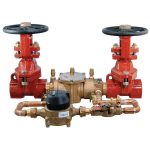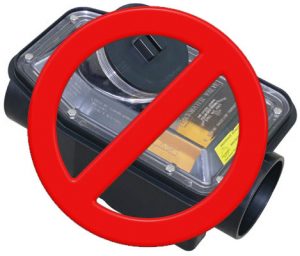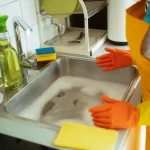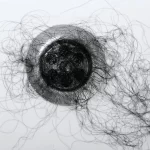People tend to take the water supply for granted. You turn on a faucet, and clean, drinkable water comes out. You find no reason to be concerned. Of course, if the water made you sick or had a strange look, smell or taste, then you might want some answers.
The reason that we have this good supply of clean water is because the City of Toronto goes to great lengths to ensure that the water is clean and safe. In guaranteeing this supply of clean water, the city has to protect the water supply from contaminants. In its efforts to protect the water supply, the local government has to ensure that the water supply is protected from backflow.
What is backflow and why does it matter?
 In any municipal water supply, the water is supposed to flow in a specific direction. When the direction of the flow reverses, you have what is known as backflow. When the water flows in reverse from a property, contaminants that may be in the on-property waterworks can flow back into the municipal water waterworks and contaminate the water supply.
In any municipal water supply, the water is supposed to flow in a specific direction. When the direction of the flow reverses, you have what is known as backflow. When the water flows in reverse from a property, contaminants that may be in the on-property waterworks can flow back into the municipal water waterworks and contaminate the water supply.
So backflow is basically water that flows back from a property, and into the water supply that we all share. It is a concern for the water supply, because it could expose the shared water supply to the potential for contamination.
Though different types of events can cause backflow from a property, there are two basic types of backflow. Backflow can caused by either back pressure or by back siphonage.
 Back pressure is caused by an increase of pressure in the on-premise water supply. If the pressure builds to a certain point, it can force water from the lines on the property, and back into the municipal water supply. This could be caused by a sudden increase in the temperature of a boiler, an elevated water tank on the property or a pump that is connected to the water supply.
Back pressure is caused by an increase of pressure in the on-premise water supply. If the pressure builds to a certain point, it can force water from the lines on the property, and back into the municipal water supply. This could be caused by a sudden increase in the temperature of a boiler, an elevated water tank on the property or a pump that is connected to the water supply.
Back siphonage is a literal reversal of the flow of water in the supply. If the local water supply experiences a sudden drop in pressure, it can actually draw water from the water lines on a property that is connected to the water supply. This could happen in the event of a water main break, or if something happens to draw an extreme amount of water from the supply at a very high rate.
Now that you know a little about backflow and how it can occur, let’s take a look at Toronto’s Backflow Prevention Program and how it affects property owners.
About Toronto’s Backflow Prevention Program
 By law, the City of Toronto has to provide its residents with drinking water that is safe and clean. In an effort to meet these responsibilities, the city enacted the Water Supply Bylaw. As part of the Water Supply Bylaw, you have the Backflow Prevention Program.
By law, the City of Toronto has to provide its residents with drinking water that is safe and clean. In an effort to meet these responsibilities, the city enacted the Water Supply Bylaw. As part of the Water Supply Bylaw, you have the Backflow Prevention Program.
The backflow prevention program is basically a set of regulations that outlines the different types of properties that need to take measures to prevent backflow from entering the local water supply, the measures that they have to take, and the penalties for non-compliance.
In the backflow prevention program, you will find different classifications for properties that are connected to the local water supply, and the types of measures that need to be taken based on the building classification. In the code, different properties can be classified as low risk, moderate risk, and severe risk.
Depending on the risk classification, the property owner may need to install different backflow devices, undergo different inspections, and have various regulatory obligations. The risk assessment comes down to the property’s potential for backflow, and the types of hazards that would come with a backflow event from the property.
Along with standards for risk assessment, the devices that need to be installed and maintenance requirements, the law also has schedules for inspection, and the penalties. With fines that exceed $100,000, a failure to comply comes with a hefty penalty, and it is something that a property owner would certainly want to avoid.
What types of properties need to worry about backflow prevention?
 As we mentioned in the previous section, different types of properties get different classifications under the Water Supply Bylaw. Under the law, different properties are classified based on risk status, and the risk status determines the property owner’s responsibilities.
As we mentioned in the previous section, different types of properties get different classifications under the Water Supply Bylaw. Under the law, different properties are classified based on risk status, and the risk status determines the property owner’s responsibilities.
With Toronto’s Backflow Prevention Program, the properties that need to concern themselves with backflow prevention include those in the industrial, commercial and institutional categories. In addition to that, the regulations also impact those that own residential properties that have more than five units. Essentially, any property that is above the low risk classification needs to have backflow protection devices installed on all connection to the local water supply.
Risk Assessment
While most businesses would be classified as moderate risk or above, there are some small businesses that may fit within the low risk classification. Generally, the only businesses that could obtain low risk status would be small retail operations.
As examples of properties that would fit within the severe risk classification, you have things like chemical manufacturing facilities, hospitals, meat processing facilities, auto repair shops, petroleum refineries, car washes, beverage manufacturing and wastewater treatment facilities.
For examples of businesses that fit into the moderate classification, you have things like hotels, kennels, apartment buildings, funeral homes, dental clinics, nursing homes and grocery stores.
For the most part, properties that get the severe risk classification will need to install a reduce pressure principle device. For properties that have the moderate risk classification, they will need a double check valve assembly. Both of these are backflow prevention devices that are designed to stop water in on-property water lines from reversing back into the local water supply.
Double Check Valve Assembly
With a double check valve assembly, you have two check valves arranged in a series. Having two check valves, this device can prevent backflow even when one valve fails. It works to prevent both back siphonage and back pressure in situations that are categorized as minor to moderate risk.
With a reduced pressure principle backflow device, you have two independent valves that are arranged with a reduced pressure zone between them. If one of the valves starts to leak, the device will discharge water from the relief port. Since there is the potential for discharge, these devices need to be installed in an area with adequate drainage. These devices are designed to prevent backflow caused by back siphonage and back pressure, and they are suitable for high risk applications.
On-Going Backflow Testing and Maintenance
Along with installing the appropriate backflow prevention devices, the bylaw also requires property owners to engage in regular maintenance, to have the devices tested every year and to get regular backflow prevention device surveys. The owner must also maintain records concerning the surveys, testing and maintenance of backflow devices. A certified backflow technician will need to be hired to perform these services.
Do single-family homes need backflow devices?
 Except for in some rare circumstances, a single-family home would not need a backflow prevention device. While it is important to note that backflow can occur from any type of property that is connected to the water supply – even single family homes – the average residence does not classify as what would be considered a moderate or severe risk.
Except for in some rare circumstances, a single-family home would not need a backflow prevention device. While it is important to note that backflow can occur from any type of property that is connected to the water supply – even single family homes – the average residence does not classify as what would be considered a moderate or severe risk.
A single family home meets the requirements for low risk status because it poses very little threat to the local water supply. Most single family homes do not have equipment that would increase the risk of a significant backflow event, and most homes do not have high volumes of serious contaminants that could potentially flow back into the local water supply.
Even when you talk about multi-unit residential buildings, the bylaw only applies to buildings that have more than five units, and that is only if all five units share the same connection to the local water supply.
When it comes to single family homes, the only reason a backflow device may be required is if there is an auxiliary water supply on the property. If you have something like a well that connects to your home water supply, you may need to have an assessment survey performed, and a backflow device might be required.
As an additional point, there is always the potential for backflow to occur on the property, and this could contaminate the water supply for the home. Backflow could occur on something like a garden hose, and then contaminate the water in the rest of the house. To prevent this, a homeowner could purchase and install a hose bib, which is a simple backflow device that you can purchase at most hardware stores. It is not required by law, but it could be a good measure to protect the drinking water in your home.
You can also prevent backflow on your property by always maintaining an air gap between water sources and whatever they might be filling. Your sinks have air gaps by the nature of their installation, but a hose can be placed in something like a tub, pool or bucket. When there is no air gap between the source of the water and something like a pool, the water could potentially flow back into the home’s water supply.
What is an air gap device?
 An air gap device is a type of backflow device that is brilliant in its simplicity. These devices provide a gap in the plumbing system between the supply and everything beyond it. These devices are installed vertically, and they provide an open space where the water falls before continuing on to the rest of the plumbing system.
An air gap device is a type of backflow device that is brilliant in its simplicity. These devices provide a gap in the plumbing system between the supply and everything beyond it. These devices are installed vertically, and they provide an open space where the water falls before continuing on to the rest of the plumbing system.
If the water is flowing in the correct direction, it will simply fall through the gap and into the rest of the plumbing system. However, when the water backs up, this wider opening prevents backflow water from getting into the supply. Basically, it provides water that is coming from the wrong direction with room to spread out, instead of flowing back into the supply, as would happen if it were simply connected with a pipe.
An air gap device is not as reliable as the mechanical options that would be used in industrial or commercial plumbing settings, but they can work as an effective measure that would work to prevent minor backflow incidents.
The confusion between backflow prevention and backwater prevention
 At this point, you should know what backflow is, why it needs to be prevented, and you should have a decent understanding what backflow prevention devices do. However, you may have heard of backwater prevention. You might wonder if backwater prevention and backflow prevention are the same, and if there are differences, what are they?
At this point, you should know what backflow is, why it needs to be prevented, and you should have a decent understanding what backflow prevention devices do. However, you may have heard of backwater prevention. You might wonder if backwater prevention and backflow prevention are the same, and if there are differences, what are they?
When you talk about backwater, you are referring to water that can come back up through a drain. This could be waste from the sewage system or it could by water from the storm drains. So when you are talking about backwater prevention, you are talking about preventing water from coming back up through the drains on a property.
To prevent backwater from coming back up the drains, you would install a backwater valve. A backwater valve operates by putting a hinged door near the area where the buildings drains meet with something like a sewer or a storm drain. When water is flowing out from the drains in the correct direction, the door opens, letting the water escape. If water starts to back up and come the wrong way, the door stays closed, and this protects the property from backwater.
Obviously, you can see the advantage of having one of these devices on the property. It can protect the property against flooding, and it can keep harmful waste from backing up from the drains, and into a home or business.
Whether you own a property that is required to have a backflow device or not, backflow prevention is something that is vital to the safety of the water supply. We all drink and bath in the water that comes from our local water supply. If various facilities and businesses were not required to adhere to backflow prevention standards, harmful chemicals and various forms of waste could easily get into the water supply.






